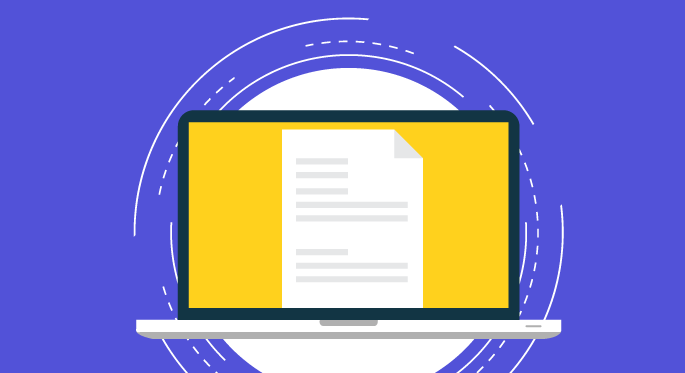Service highlights and frequently asked questions

How do I update an address?
You can update your account address one of three ways:
- Enter information online.
- Log in to your account at putnam.com/individual.
- Click on your name to view the drop-down menu.
- Select “Profile” and then “Change” in the address selection.
- Select the account address(es) to change and click “Continue.”
- Enter new address and click “Continue.”
- Verify on next page and then click “Save.”
- Mail this form.
- Call 1-800-225-1581 Monday-Friday 8:00 a.m. - 8:00 p.m. Eastern Time, excluding stock market holidays.

How do I obtain a copy of my tax forms?
Tax forms are mailed by January 31 and should arrive within the first two weeks of February. You can also view or print your tax form online prior to receiving it in the mail.
Please verify that your mailing address and paper suppression selection is accurate.
To access your tax form(s) online:
- Log in to your account at putnam.com/individual.
- If you have multiple accounts, select the desired account.
- From the left-hand menu, click "Document center" and then the “Tax forms” tab.
- Choose the document you want to view or download.
- Use the drop-down menu or search to select historical tax forms, if available.
For a guide of your tax form or additional tax-related frequently asked questions, please refer to Putnam's Tax Center.

How do I obtain a copy of my statement?
Statements are generated at quarter-end (March, June, September, December) and mailed during the first two weeks of the following month. Mail generally takes 5–7 business days to arrive.
You will be able to view or print your statement online prior to receiving it in the mail. If you do not receive a statement, please verify that your mailing address and paper suppression selection is accurate.
To access your statement(s) online:
- Log in to your account at putnam.com/individual.
- If you have multiple accounts, select the desired account.
- From the left-hand menu, select "Document center" and choose the document you want to view or download. Use the drop-down menu or search to select historical statements, if available.
Paper suppression settings: Please review your mailing options to verify whether your tax forms have been suppressed. If you do not wish to have your tax forms suppressed for future years, please update your mailing options.
Questions from investors
How do I establish online access?
To establish online account access, you will need the Social Security number of the primary account holder, phone, email, and address information.
Why am I not seeing a specific tax form that I'm looking for?
There can be several reasons why a tax form would not be generated for a given tax year:
- 1099-B: Redemptions and exchanges from money market funds are not reported on Form 1099-B. There is no gain or loss to report on these funds as the share price generally does not change from $1.00 per share.
- 1099-R: This form will not be generated unless a taxable distribution is taken from a retirement account. Exchanges within a retirement registration or a Transfer of Assets to another retirement plan are not considered taxable distributions and will not result in the generation of a 1099-R tax form.
- 1099-DIV: Putnam does not generate 1099-DIV tax forms for accounts that received less than $10.00 in total dividends for the tax year.
- 5498: This form will not be generated for an investment into a nonretirement account or for a transfer of assets into a retirement account.
- Paper suppression settings: Please review your mailing options to verify whether your tax forms have been suppressed. If you do not wish to have your tax forms suppressed for future years, please update your mailing options.
Checkwriting — How do I view a paid Checkwriting check?
Images of paid Checkwriting checks are available online.
To access a copy of your paid Checkwriting check(s):
- Log in to your account at putnam.com/individual.
- If you have multiple accounts, select the desired account.
- From the left-hand menu, select "Document center" and choose the "Confirmations” tab. Use the drop-down menu or search to select historical documents, if available.
Paid Checkwriting checks will display in order of transaction date, with the most recent transaction displaying first. Click the "Show more" link to view additional Checkwriting checks.
Checkwriting checks paid prior to June 8, 2019, are not available online. To obtain a copy of a Checkwriting check that is not available online, please contact us at 1-800-225-1581 Monday-Friday 8:00 a.m. - 8:00 p.m. Eastern Time, excluding stock market holidays. Paid Checkwriting checks are available for up to seven years.
How do I open an account?
Working with a financial professional is key to successful financial planning. With your financial professional's help, complete the appropriate Putnam Investments account application.
To learn more about finding a financial professional, see the section "How to find an advisor.".
For non-retirement accounts, use this form; for IRA/Roth IRA, use this form and mail it to the address indicated. Once your account is established, use your account number to set up online account access, which allows you to view and manage your account(s) online.
How do I establish electronic delivery of my Putnam documents?
To establish electronic delivery of your documents, first log in to your account at putnam.com/individual. If you have multiple accounts, select the desired account.
- Click on your name to view the drop-down menu.
- Select “Mailing options” and select “Select e-Delivery for all” or choose by each mailing type.
- Review the e-Delivery Terms and Conditions and then click “Agree and save.”
How do I change my name?
You can update your name by completing and mailing this form.
How do I view/update my beneficiary information?
To view or update your beneficiary information, first log in to your account at putnam.com/individual. If you have multiple accounts, select the desired account.
- From the left-hand menu, select “Account options” to view the current beneficiary information on file.
- Click on the beneficiaries “card” to make updates or add new beneficiaries.
Please note that married clients must designate their spouse as the primary beneficiary. If you wish to designate a primary beneficiary other than your spouse, then you must complete and mail this form.
Putnam's award-winning service
We are committed to providing the best possible service to investors.
| Award: | DALBAR mutual fund service |
| Years won: | 30 consecutive years |
| Recognizes: | DALBAR conducts rigorous, systematic, year-round testing of customer service. The award symbolizes achievement of the highest tier of service and is awarded only to firms that exceed industry norms in key service areas in the financial services industry. |

| Award: | DALBAR Total Client Experience |
| Years won: | Seven years, every year it has been presented |
| Recognizes: | As the sole recipient of the award, Putnam was honored for providing quality, accuracy, and client security, based on the complete customer experience. |
| Award: | National Quality Review (NQR) 5-Star performance rating |
| Years won: | 2002, 2009, 2010, 2016 |
| Recognizes: | Consistent outstanding quality, based on evaluations of transactions such as investments, redemptions, new accounts, exchanges, account maintenance, and transfers. |
Check-free, electronic investing.
You may now link your banking information to your Putnam accounts online. As long as you are a registered owner of the bank account, you may add a bank for additional investments and withdrawals.
To add bank information, on the left-hand side menu, select “Account options” and click on “Bank Information” and choose “Add bank account.” You'll need your bank's routing and account numbers. Use this screen to also delete a bank.
If you need to add bank information for which you are not a registered owner, you'll need to complete this form, which requires a Signature Validation Program stamp.
What can I view or update online?
From the Overview page, you can View your account balances, personal rate of return, buy, exchange, or sell funds.
- View your account balances and personal rate of return.
- Buy, exchange between, or sell funds: Select “Move my money” in the left-hand nav.
- Change account options such as bank information, how to treat dividends and capital gains, and more: Select "Account options" in the left-hand nav to change account options for available accounts.
- View/print tax forms and statements: Select "Document center" in the left-hand nav. Select to View or Download the desired form or statement.
- Suppress mailings: Click on your name at the top of the screen to view the drop-down menu and select "Mailing options." Select your preferred settings and enter a valid email address. You have the option to receive account balance by email either daily, weekly, or monthly. At the bottom of the page, check off the e-Delivery Terms and Conditions box and click “Agree and save.”
- Account history (transcripts): Click “Document center” in the left-hand nav, and then select the “Transcripts” tab at the top of the Document center. Click to view PDFs of transcripts by year. PDFs of these documents are available from 1996 to present, if applicable.
How do I purchase shares for an existing account?
Your financial professional is a great resource for additional share purchases and other account transactions. They can offer advice and ensure your decisions fit your long-term financial plan. To learn more about finding a financial professional, see the section How to find an advisor.
You may purchase shares online using the Move my money link in the left-hand nav. From here you can choose a one-time investment or set up a recurring investment into an existing fund or a new fund. If you don't already have a bank on file, you will be prompted to add one.
You may also purchase shares by mail:
- Include your account number and mail your check to:
- Regular U.S. Postal Service:
-
Putnam Investments
P.O. Box 219697
Kansas City, MO 64121-9697 - Overnight:
-
Putnam Investments
430 W. 7th Street
Suite 219697
Kansas City, MO 64105-1407
To set up a recurring buy, use this form and mail it to the appropriate address above.
How do I exchange shares?
To exchange fund shares into a diffferent fund, first log in to your account at putnam.com/individual. If you have multiple accounts, select the desired account.
- From the left-hand menu, select "Move my money” and then “Exchange."
- Select the From fund – the fund you want to exchange out of, and whether you want to exchange by dollar, percent, or by shares.
- Enter the total amount you want to exchange.
- Select the fund(s) you want to move the proceeds into and click “Select fund.”
- Choose “Continue,” review the summary, and then select “Submit.”
You may also call 1-800-225-1581 Monday-Friday 8:00 a.m. - 8:00 p.m. Eastern Time, excluding stock market holidays.
How do I redeem shares?
You should always talk to your financial professional before selling shares. They can offer advice and help you make decisions that fit your long-term financial plan. To learn more about finding a financial professional, see the section How to find an advisor.
To sell fund shares:
- Log in to your account at putnam.com/individual.
- If you have multiple accounts, select the desired account.
- From the left-hand menu, select "Move my money” and then “Sell."
- Select whether you want to sell by dollar, percent, or by shares.
- Select the fund(s) you want to sell and click “Select fund.”
- Enter the amount you want to sell and where you would like the proceeds to be sent.
- Choose “Continue,” review the summary, and then select “Submit.”
You may also:
- Contact your financial advisor.
- Mail a redemption form:
- For non-retirement accounts, use this form.
- For IRA/Roth accounts, use this form.
- Call 1-800-225-1581 Monday-Friday 8:00 a.m. - 8:00 p.m. Eastern Time, excluding stock market holidays.
How do I transfer an account?
You can transfer your account to a new or existing account by mail:
What does "certification" mean?
Certification is a stamp or raised seal placed on a copy of a legal document to confirm that the document is a true and correct copy of the original and that it is still in full force and effect.
- Court certifications are provided by a court and only apply to documents that are issued by the court. Examples include letters testamentary, settlements of small estates, letters of appointment of guardianships and conservators, and divorce decrees.
- Non-court certifications vary depending on the type of non-court document being certified. A Medallion Program signature guarantee (see definition below) or an attorney certification letter may be acceptable to certify certain non-court documents. Examples include corporate resolutions, powers of attorney, and trust agreements.
What is a notary public?
A notary public is a person authorized by the state in which the person resides to administer oaths (swearing to the truth of a statement) and take acknowledgments.
A notary signature and seal/stamp are required for executing certain legal documents such as wills, trusts, powers of attorney, etc. Notaries do not provide financial indemnification in the event of fraud or forgery and therefore are not acceptable in lieu of a signature guarantee to redeem or transfer shares.
What is a signature guarantee?
A signature guarantee is a stamp provided by a financial institution warranting that an individual's signature is genuine. The guarantor accepts financial liability in the event of fraud or forgery.
Putnam accepts signature guarantees from:
- Securities broker/dealers, commercial banks, federally chartered savings institutions, and federally chartered credit unions
- Trust companies, state chartered savings institutions, and credit unions
By guaranteeing the signature, the guarantor warrants that at the time of signing:
- The signer signed the document, and the signature was genuine.
- A signature guarantee has an unlimited dollar liability, unlike a Medallion Program signature guarantee.
What is a Medallion Program signature guarantee?
A Medallion Program signature guarantee is a stamp provided by a financial institution or a broker/dealer warranting that an individual's signature is valid.
Putnam accepts Medallion Program signature guarantees in place of traditional signature guarantees and certain forms of certification for non-court documents. Putnam does not accept dated medallion guarantees.
-
Each Medallion Program member has a specific liability limit per transaction, which is indicated by the letter that precedes the FINS (Financial Institutions Numbering System) number on the Medallion Program guarantee (for example, in A0123456, "A" indicates that the guarantor may guarantee any transaction up to $1,000,000).
Prefix Letter Liability limit per transaction Z $10,000,000 Y $5,000,000 X $2,000,000 A $1,000,000 B $750,000 C $500,000 D $250,000 E $100,000 F $100,000 (credit unions only)
What is a power of attorney?
Power of attorney is a document that appoints one or more persons as agents (or "attorney in fact") to act on behalf of the "maker" or "principal."
There are two types of powers of attorney acceptable to Putnam:
- Normal power of attorney (POA) is voided if the grantor becomes incapacitated or dies.
- A "durable" power of attorney (POA) remains in effect if the grantor becomes incapacitated, but is voided if the grantor dies.
Putnam only accepts a certified POA within 90 days of the certification to ensure the document has not been revoked and that the POA maker is still alive.
Note: A "health-care power of attorney" may not be used to act on accounts in the Putnam funds.
What are my options to move retirement assets?
There are a number of options for moving retirement assets from one institution to another and from one plan to another, such as trustee-to-trustee transfers and direct rollovers and indirect (60-day) rollovers.
Information specific to retirement plans offered by Putnam may be found in each plan's disclosure statement. Please consult your financial or tax advisor for more information as to which options may be available to you.
Is Putnam required to withhold taxes on distributions from non-qualified retirement plans?
Generally, all distributions are considered taxable income for the tax year in which they are processed and will be reported on Form 1099-R.
-
- IRA
- IRA rollover
- Roth IRA
- Roth IRA conversion
- Salary reduction employee pension plan (SARSEP)
- SIMPLE IRA
- Simplified employee pension plan (SEP)
Generally, all distributions are considered taxable income for the tax year in which they are processed and will be reported on Form 1099-R. Only after-tax contributions can be redeemed without tax liability, but IRS regulations state that distributions must be a proportionate mix of both after-tax and pretax contributions.
A 10% federal tax withholding is required on all distributions from non-qualified retirement plans except Roth IRA plans, unless the shareholder specifies to "opt out" of withholding. Shareholders who are U.S. citizens but do not live in the United States and/or those who have not provided a tax identification number cannot opt out of tax withholding.
Exception: U.S. citizens with a U.S. residence having a special mailing address outside the country may opt out of tax withholding if a tax ID has been provided.
In addition, Putnam withholds state taxes on retirement distributions for residents who live in a state that requires state income tax to be withheld when federal income tax is withheld.
For more information regarding the tax consequences of a distribution from any retirement plan, please consult your financial or tax advisor.
Can Putnam provide financial, legal, or tax advice?
No. For advice on these topics, please consult with your financial advisor, attorney, or accountant.
Can Putnam recommend a financial advisor?
Putnam believes that every investor should work with a financial advisor. However, we do not recommend specific individuals.
Do I need a financial advisor?
In a world of rapidly changing markets — and thousands of mutual funds from which to choose — a full-service financial representative is an invaluable resource for investors.
A financial representative can help you narrow your investment options to those that are most suited to you. Even the most experienced investors benefit from the comprehensive research, timely information, and expertise that a financial professional can provide.
Putnam recommends that you work with a financial advisor.
What are the available share classes?
The various share classes and their respective sales charges and eligibility criteria are outlined in the prospectus for each of the Putnam funds. Please refer to the prospectus for more detailed information.
As always, we recommend that you consult with your financial representative to determine the appropriate investment for you.
Does Putnam report cost basis to the IRS?
Cost basis is the cost of shares you purchase, including reinvested dividends and capital gains distributions. The cost may be adjusted for any applicable sales charges or transaction fees.
When you sell shares in a taxable account, the cost basis accounting method you choose helps determine how your gain or loss is calculated.
For many years, Putnam has provided cost basis information as a service to shareholders, but did not report this information to the IRS. Beginning with the 2012 tax year, IRS regulations require mutual funds to:
- Report cost basis information to shareholders and the IRS on Form 1099-B
- Choose a default cost basis method if a shareholder does not elect a specific method
The new regulations apply to shares of mutual funds purchased in certain accounts on or after January 1, 2012 (covered shares), and subsequently sold or exchanged from the account. The regulations do not require mutual fund companies to report cost basis for shares purchased prior to January 1, 2012 (non-covered shares), and do not apply to shares in retirement plan accounts, education savings plan accounts, or money market funds.
Putnam has elected to use Average Cost (ACST) as its default cost basis reporting method; however, shareholders will be allowed to choose a different method or change their existing method. The other available methods are:
- First In, First Out (FIFO)
- High Cost, First Out (HIFO)
- Last In, First Out (LIFO)
- Loss/Gain Utilization (LGUT)
- Low Cost, First Out (LOFO)
- Specific Lot Identification (SLID)
- Single Account Average Cost
- Average Cost
For more information visit /costbasis/
Do I need to be a U.S. citizen to open an account?
Putnam funds accept investments from legal residents of the United States who can provide a valid U.S. taxpayer identification number that Putnam can independently verify.
Putnam funds generally do not accept investments from non-U.S. persons who do not have a residential address within the United States.
What is the $15 to $35 withdrawal from my educational and/or retirement accounts?
Putnam assesses annual fees for educational accounts and retirement accounts for which Putnam Fiduciary Trust Company acts as directed trustee.
These fees are assessed each year and will show as withdrawal on your summary statement. The fee is not a taxable distribution.
